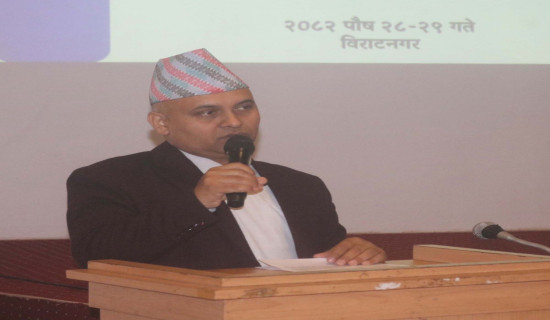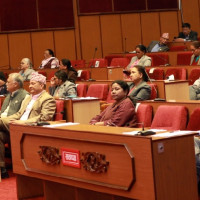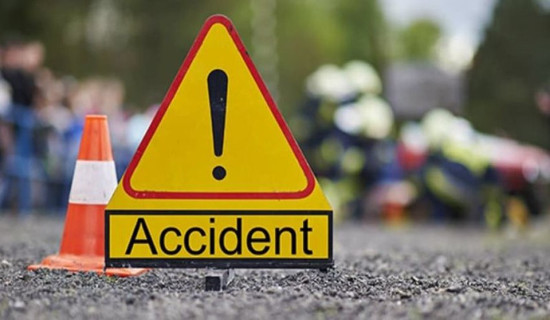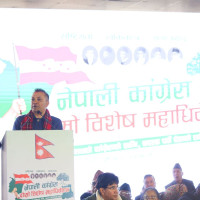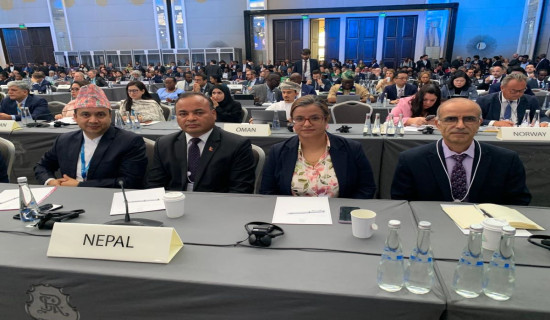- Monday, 12 January 2026
Kathmandu's water unfit for health: Study
Kathmandu, Aug. 17: Of all the water samples tested in the Kathmandu Valley, 40 per cent were found contaminated with coliform bacteria. A study by the Nepal Academy of Science and Technology (NAST) team revealed the findings regarding antibiotic-resistant bacteria in Kathmandu's drinking water supply.
Of 50 total water samples collected from a city supply water distribution scheme in Kathmandu were analysed to assess both the physicochemical and microbiological quality, comparing the results against Nepal's National Drinking Water Quality Standards (NDWQS) 2022, said Dr. Tista Prasai Joshi, a scientist at the NAST. The research, aimed at understanding the development of biofilms (clusters of bacteria) in gram-negative bacterial contaminants (a group of bacteria that can cause infections and are known for their resistance to many antibiotics), underlined a potential public health crisis due to the persistence and resistance of these bacteria to common antibiotics.
The research focused on the phenotypic (characteristics of an organism, such as appearance, behaviour, or biochemical properties, which result from the interaction of its genes with the environment) and genetic capacity of biofilm formation (a slimy, protective layer, allowing them to survive in harsh environments) by Escherichia coli (contamination with faecal matter and the presence of harmful strains can pose serious health risks if the water is consumed) isolated from supply water, alongside their antibiotic susceptibility patterns.
According to the study’s findings which were released a few days back, several critical water quality parameters exceeded the national standards. Forty per cent of the water samples were contaminated with total coliform bacteria, a clear indication of faecal contamination and a significant public health concern, she said.
“Even though the result is not good, we found 60 per cent of the tap water is not contaminated, which means the results are more positive than in previous years,” She said. Among the bacteria, isolated E. coli and Citrobacter species (contamination and certain strains may pose a risk of infection, especially to those with weakened immune systems) were the most prevalent, found in 64.52 per cent and 35.48 per cent of the contaminated samples, respectively.
One of the most concerning findings of the study was that many of the bacteria could form biofilms. Biofilms are clusters of bacteria that stick to surfaces and are covered by a protective layer, making them much harder to kill with antibiotics or cleaning methods. The study discovered that 45 per cent of the bacteria tested could form these biofilms, Dr. Prasai said.
The findings also raised serious concerns about the safety of drinking water in Kathmandu. The presence of antibiotic-resistant bacteria, coupled with their ability to form biofilms, poses a significant threat to public health. Biofilms in water supply systems can persist for extended periods, making it difficult to eliminate the bacteria even with standard disinfection methods. This persistence increases the risk of waterborne diseases and complicates treatment efforts.
The NAST researchers have stressed the need for urgent public health and drinking water treatment interventions. Improving the effectiveness of water treatment processes, particularly addressing biofilm formation and antibiotic resistance, is crucial. The study suggests that further research is necessary to fully understand the scope of the problem and to develop targeted strategies for mitigating the risk posed by these potential pathogens in Kathmandu's water supply.
The findings underscore the importance of continuous monitoring, rigorous water treatment, and public health awareness to prevent the spread of antibiotic-resistant bacteria and protect public health in Kathmandu and beyond.
Water expert Deep Narayan Shah mentioned that most jar water in the Kathmandu Valley is unsafe to drink without boiling or proper treatment. "Many people in Kathmandu rely on jar water for drinking, while others use underground water or pipeline water. Jar water is often delivered to households without the jars being treated after their return. Also, pipelines are contaminated because they are not properly maintained." Shah suggested using water in the valley for drinking only after boiling it or adding chlorine tablets.
Aqua Tridev fined Rs. 200,000
Meanwhile, Kathmandu Metropolitan City has decided to impose a fine of Rs. 200,000 on 'Aqua Tridev’ water brand after finding coliform bacteria in water jars produced by Jambuling Group Industry, operating in Ward No. 10 of Tarakeshwor Municipality, Kathmandu.
Water samples were collected from 20-litre jars produced by five different brands in the Gongabu area. These samples were sent to the laboratory of Kathmandu Upatyaka Khanepani Limited (KUKL) for testing. The test results were received on Tuesday, revealing the presence of faecal coliform in the Aqua Tridev brand water.
The sample showed more than 300 colony-forming units (CFU) per 100 millilitres, while it should be zero, according to KMC.
According to the mandatory quality standards of the Nepal Government's Food and Feed Act 2080, processed drinking water should have zero coliforms. The presence of more than 300 CFU means that either the water source is not clean or the purification process is incomplete. The source of coliform is human or animal waste.



